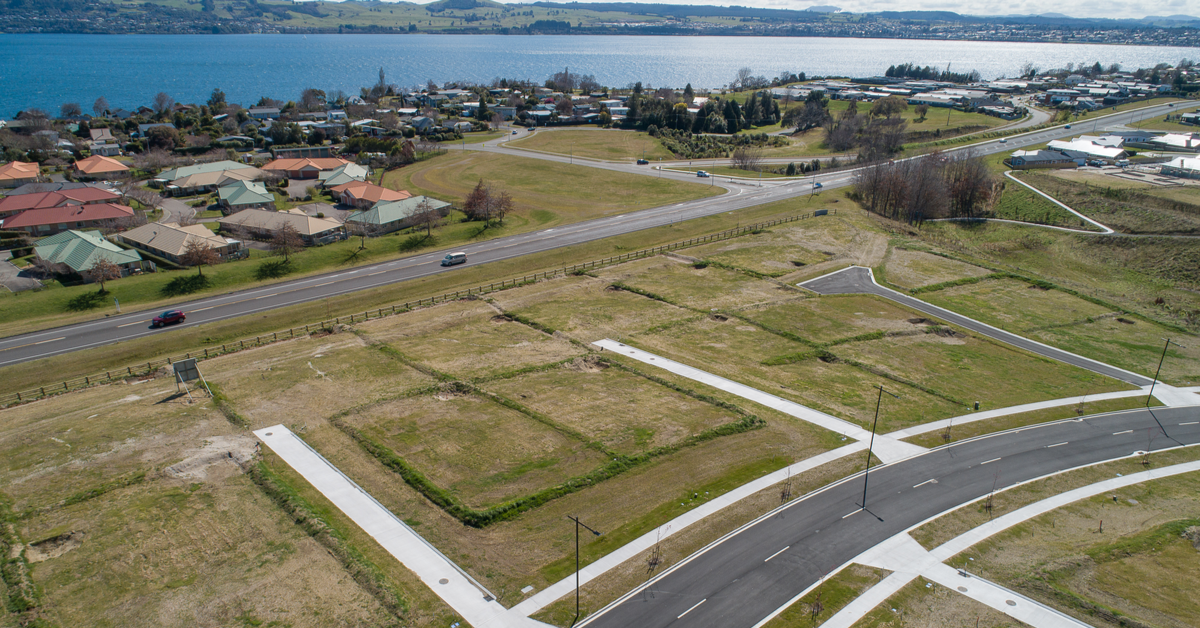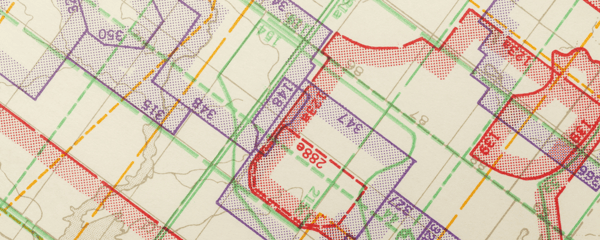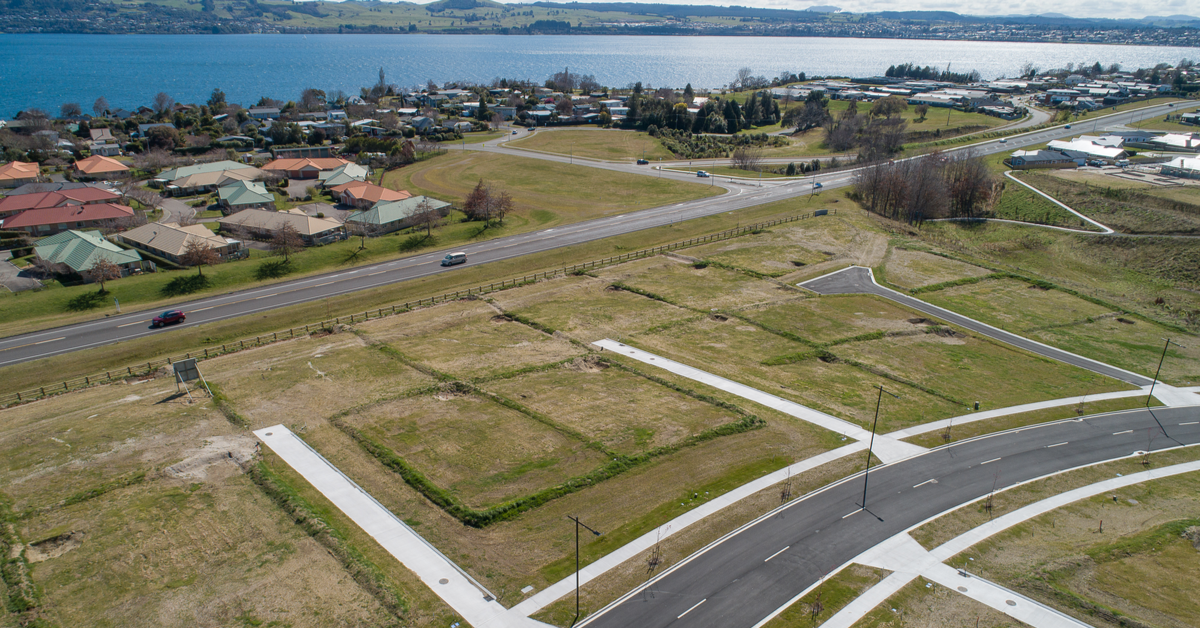
If you already own a property in New Zealand or you're considering buying an investment property with a bit of land attached, subdivision can seem a bit like a golden goose.
You simply split your property, build a new dwelling and cash out by selling (or renting) the new house...right?
Unfortunately in NZ it's not quite that simple. There are local council zoning rules, NZTA regulations and local Iwi to consider - and that's before we start to talk about financing.
But don't be put off, subdividing for profit is possible, it's just important to explore your options and restrictions and do the maths first. If you're considering subdividing, here's everything you need to know.
- Definition of subdivision
- How to know if your land is safe to build on
- Factors that may affect your ability to subdivide
- How to subdivide (step-by-step)
Definition of Subdivision
.png?width=1000&name=SUBDIVISION%20Definition%20(1).png)
How to Know if your Land is Safe to Build On

Before you begin the process of applying for relevant subdivision consents and get the process ticking, it's really important to do your due diligence on the condition and safety of the land you're planning to subdivide first. This will save you a bunch of unnecessary and costly hiccups later on in the process as you can catch any fundamental issues early.
Shape and Size of Land
Once you've subdivided your plot of land, what size will your property be? The smaller the plot of land, the more restricted and difficult it will be to build. Your subdivided land will need to be at least 950m2 and ideally the section will be in a usual/regular shape.
Stability and Hazards
Is the ground that you're planning on subdividing stable enough to support an entire new dwelling and are there any imminent hazards that might come with building on your plot of land? If you're not sure of the quality of the area you're planning on subdividing, seek the help of a local licensed land surveyor.
Some common hazards might include:
- Slope
- Inundation (including flooding, overland flow, storm surge, tidal effects and ponding)
- Plot boundaries
- Erosion
- Slippage
- Risk of falling debris (including soil, rock, snow, and ice)
Utilities
Your new section will also need to meet the utility requirements of being connected to gas, water and electricity infrastructure. Not only this, but storm-water and wastewater drainage may be necessary, or existing pipes may need to be upgraded to service a new build.
Vehicle Access
All new sites must have vehicle access for emergency and everyday use. There must be enough space to connect a regulation driveway to a public road system. There are different requirements for access to rear sites (say you're planning on building behind your current home and extending the driveway) and even speed regulations for long access strips greater than 50m. You can see the full list of regulations, here (these may differ from council to council).
Factors that May Affect Your Ability to Subdivide

Once you've consulted with the necessary parties (surveyors and lawyers, usually) and have determined that your property is fit to subdivide, there are a few other factors that might affect whether or not you'll legally be able to subdivide a property that you'll need to consider.
Type of Subdivision
In New Zealand (depending on local Council legislation), there are a few types of subdivision that your property may fall under, which will impact your chances of subdivision consent as well as the costs and risks involved in the project. You can check out the full list of subdivision types with explanations, here.
Ownership
Often in New Zealand, particularly if a property has been passed down through generations or received as a will entitlement, there will be multiple owners and stakeholders involved. If this is the case for your property, you'll need the consent of all parties before you can begin subdivision.
Zoning
In order to know what you can legally do to your property, you'll need to find out what zone it is in.
Zoning rules require us to consider potential effects development or activity might have on:
- Environment
- Heritage
- Culture
- Conservation
- People
If you're not sure which zone your land falls in, check in with your local government body and they'll be able to direct you to the information.
Taxes
If you buy and sell a residential property within five years, you'll pay tax on the income you earn from the sale, unless you're selling your family (main) home or another exclusion applies. This is regardless of your intention at the time of the purchase. A withholding tax may also be deducted at the time of sale. It's important when calculating your ROI for subdividing and selling property to consider the tax that will be deducted from the profit.
You can take a look at the full list of taxes for residential property sale, here.
[NOTE: This blog does not purport to be tax advice, but rather a superficial overview of land transactions]
How to Subdivide (Step-by-Step)

Once you've done your due diligence and have determined with professional advice that you're ready to subdivide your section, you're ready to begin the application process. It's a long-winded system and can be quite daunting if it's your first time, so we've condensed the process into five easy steps for you to follow.
- Step One: Subdivision Consent
As discussed above, as an owner of land that you’re wishing to subdivide, you’ll need to formally submit an application to do so with your regional council. The council will consider whether or not the proposed division of land is of risk to the natural environment and complies with restrictions and regulations. If they’re satisfied with your application, you’ll be given the go-ahead.
- Step Two: Survey Plan Approval
Through a registered surveyor, you must then submit your official plan for approval to the relevant territorial authority. They will then decide whether the proposed plan works within your original consent certificate compliance. You should receive approval for this plan within 10 days of applying for it.
- Step Three: Section 224c Certification
A certificate must be lodged with the Register-General of Land stating that the territorial authority has approved the survey plan and all of the conditions of the subdivision consent have been complied with to the satisfaction of the territorial authority.
- Step Four: Lodgement with Land Information New Zealand
Legal title documents and the survey plan must be lodged with Land Information New Zealand for approval. LINZ will check the legality of your documents and check the accuracy of your plans to fit within the national cadastral database.
- Step Five: Certificate of Title
Congratulations! You’ve made it to the final step - the new certificate of title. You can now proceed with your subdivision as per your approved plans.
How to finance a residential subdivision
If you're interested in subdividing your own section, or perhaps beginning an investment project to sell-on, but aren't sure what the wisest way to finance your endeavour would be, we'd be happy to help! Contact us below, and one of our team members will sort you out with some sound advice.










